Andrew Wright, General Manager for Calypso Star Charters, recently sent us some photos of what he thought was a blanket octopus that had swum into their shark viewing cage at the North Neptune Island marine park on Good Friday.
(Click on the following images to enlarge them.)
The octopus that swam into the shark viewing cage
(Photo courtesy of Andrew Wright/Calypso Star Charters)
It is most unusual that the octopus swam into the shark viewing cage where it was able to be photographed. It certainly seems to be a blanket octopus, Tremoctopus violaceus.
Andrew also sent a photo of the ink that the octopus squirted at some stage. (“Plenty of it!”, he said.)
A photo of the ink squirted by the octopus
(Photo courtesy of Andrew Wright/Calypso Star Charters)
A sample of the ink squirted by the octopus was gathered and photographed.
A photo of the ink itself
(Photo courtesy of Andrew Wright/Calypso Star Charters)
According to “A Guide to Squid, Cuttlefish and Octopuses of Australasia” by Mark Norman & Amanda Reid (mlssa No.1051), blanket octopus live in the open oceans of the world. The species belongs to the Family Tremoctopodidae. It is only the female blanket octopus that has long veil-like webs on the upper arms, resembling a blanket. These long, thin webs trail behind the female when she is ‘jetting’.
Male blanket octopus are small in size and have no webs at all. The female reaches a length of about 2 metres, whereas males are only 5-10cm long.
The book goes on to state, “The transparent webs of the front arms are segmented and can be shed like sheets of paper. The live animal has iridescent purple and gold spots within each web segment of unknown function.” The females are dark purple above and cream pink below.
The one that swam into the shark viewing cage is clearly a female due to its colouration and size.
A close-up shot of the female blanket octopus
(Photo courtesy of Andrew Wright/Calypso Star Charters)
Males store sperm in “a specially modified third right arm” which develops in a pouch. The arm has a bulb-like sperm reservoir on the tip. The arm severs and crawls into the mantle of the female during mating, after which the male dies. The eggs that the female carries are “attached in strings to a small secreted rod.
Juvenile (female?) octopus have been found to arm themselves with the stinging tentacles of jellyfishes. Females have water pores on their dark upper surface.
Our thanks go to Andrew Wright & Calypso Star Charters for sending us the octopus photographs and sharing their sighting with us.

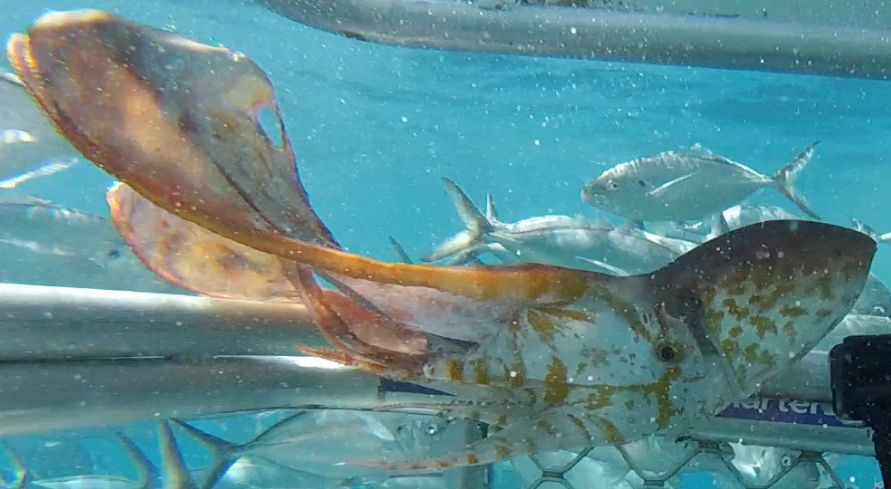
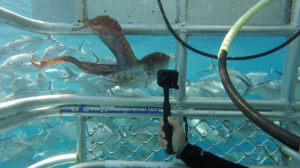
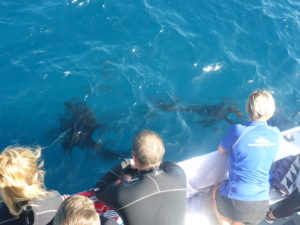
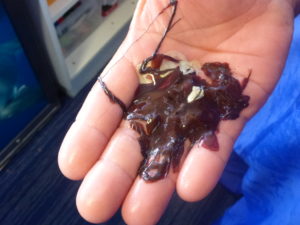
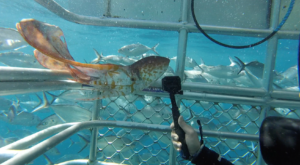
WOW! I can verify you are absolutely right in your identification! So much more exciting than sharks don’t you think? Mandy Reid
Exciting alright! Thanks for your ID confirmation.
[…] paper, the blanket octopus seems like a perfectly ordinary octopus. They live in the ocean where they favor waters. They eat […]
Thanks for sharing these details with us, Jess
[…] article about a South Australian sighting 4 years ago didn’t get the same publicity. The blanket octopus, Tremoctopus violaceus reported how Andrew Wright, General Manager for Calypso Star Charters, had sent us some photos of […]